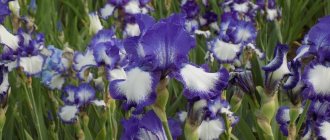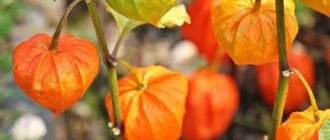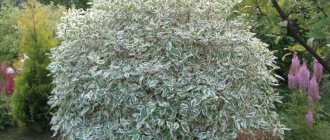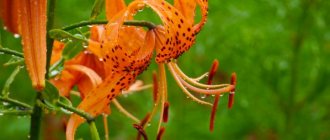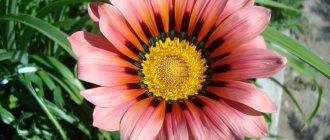But if you are not a fan of long preparations, or you do not have the necessary experience. No problem! Nature has given us many beautiful flowers that can be sown directly in open ground. And the best month to create a flower bed is May!
We have made a selection of the most beautiful and vibrant annual flowers that do not require special care and which even a beginner in floriculture can grow. You will learn what flowers can be planted in open ground in May, how to create a dream flowerbed and correctly combine flowers, as well as how to care for them.
Nasturtium
An annual with bright orange, yellow, orange-yellow flowers that can not only decorate a flower garden, but is also very useful . Nasturtium can be planted against a backdrop of tall plants with not very bright flowers, or mixed with bright orange nasturtium and blue-violet bells. Cascading varieties of nasturtium are planted in flower pots and decorated with loggias, verandas, and gazebos.
The buds and leaves of the plant contain many useful substances , so they are used to make salads and treat many diseases.
If you have not grown nasturtium seedlings, sow the flower seeds in open ground in May so that you can admire the bright buds in July-August.
Calendula or marigold
Many gardeners grow varietal calendula in seedlings, and simple marigolds are sown in the ground in May. Calendula seeds will sprout in 7-10 days, and by the end of June or July, orange sunflowers will open on the plants. They will bloom until October or even November. Flowering times depend on weather conditions.
Flower care
Each plant requires certain care. Some are overly demanding, others require little to no attention.
There are a number of general rules for gardeners, no matter what kind of flowers he grows.
- Timely watering. Every plant needs water. For some, watering once a week is sufficient, while others require daily watering. It also depends on the weather. The drier and hotter the climate, the more often the soil needs to be moistened. Watering should be done either in the evening after sunset or early in the morning.
- Weeding and loosening. You need to keep an eye on the flowerbed! As soon as weeds appear on it, get rid of them. A couple of times a week it is necessary to loosen the soil between the rows of plants so that it is saturated with oxygen.
- Feeding. Not all flowers require additional nutrients, especially if they are planted in good soil. Which type of fertilizer to choose depends on the specific plant. Annual flowers, as a rule, do not require feeding, or it can be done once per season.
Unfortunately, it is impossible to describe in one article all the types of flowers that can be planted in May, because there are a huge number of them. And it is even more impossible to talk about their possible combination. Experiment, create your own little masterpieces and most importantly, don’t be afraid to decorate your garden!
Viola
Viola blooms two to three months after germination, so flowers planted in May will decorate the area with their flowering at the end of July or August.
There are many varieties of viola that have a wide variety of colors - plain, multi-colored, spotted, with contrasting strokes. Since pansies are biennial plants, they will bloom again in early spring the following year.
You will be interested to know: Climbing roses: planting and care, growing in the country and propagation
Worst days
The most difficult days on which any work with plants is contraindicated are Full Moon and New Moon. Both points are energetically complex.
Full Moon: April 16, May 16, June 14.
New Moon: April 1, May 30, June 29.
During the Full Moon, plants are so energetically charged that they become very vulnerable. Any wound is perceived more acutely. And the subsequent decline in lunar activity prevents tissues from recovering quickly.
During the New Moon, plants feel still and still. The very next day energy will begin to arrive, but its portion is still small.
Planting indoor plants according to the lunar calendar in June or in any other month on the days before and after the New Moon or Full Moon has its own characteristics. The influence of the Moon's extremes is so great that it extends into the coming days. Therefore, on the “before” date you should not work with plants in the evening, and on the “after” date – in the morning.
Helenium
Tall plants about a meter high will bloom with bright flowers closer to August. Their petals can be red and copper, yellow-golden and bicolor. Heleniums bloom from one and a half to two months and grow well as tapeworms and against the background of tall blue delphiniums, in the center of the flower bed and along the edges of the paths.
Snapdragon
Antirrinum is distinguished by interestingly shaped buds, the colors of which can be delicate or bright, single-color or multi-colored. The plants themselves can be low and up to one meter in height.
If you plant snapdragons in open ground in May, flowers will form and bloom on it in August, since the seeds of antirrinum take quite a long time to germinate.
Snapdragon looks beautiful in the same flower bed with nasturtiums and marigolds, in the middle of the flower garden, where alyssum grows along the edges. It can be planted against a background of conifers or decorative foliage plants.
Common mistakes
Let's look at what mistakes flower growers most often make when growing annuals on their site.
- Choosing the wrong place for sowing. Most flowers love open, sunlit areas with well-warmed soil.
- Sowing the “wrong” seeds. If you sow seeds from plants that bloom in late August, you should not expect them to bloom in June.
- Planting seeds too deep. Because of this, flowers take a very long time to sprout, and some grains do not hatch at all.
Marigold
Marigold flowers come in orange, yellow, red, brick and other bright colors. These very unpretentious flowers will bloom as early as July or even at the end of June if marigolds are planted in May.
Bright marigolds look beautiful in a flower bed with pink and lilac petunias, between blue flowers, against the background of not very bright dahlias and asters. By choosing flowers of different varieties, you can create a beautiful and unusual flower garden from marigolds alone.
Annuals that bloom all season: from spring to frost
Ageratum, Azarina, Amaranth, Angelonia, Aster annual (second half of summer), Impatiens, Marigolds, Borago, Annual cornflowers, Verbena hybrid, Gomphrena, Dimorphotheca, Calibrachoa (mini-petunia), Catharanthus (pink periwinkle), Cleome (second half of summer ), Kobea (liana, blooms from July), Lobelia, Lobularia, Snapdragon (antirrhinum), Cosmos (cosmos), Mirabilis (Night Beauty), Nasturtium, Nemophila, Nigella, Penstemon, Petunia, Sunflower (second half of summer), Salvia , Salpiglossis, Sanvitalia, Sutera (bacopa), Schizanthus (schizanthus), Tobacco, Tithonia, Tolpis, Violet, Celosia, sweet pea
Annuals that bloom all season: Sutera, petunia, everblooming begonia, marigolds
Amaranth
The amaranth flower is a short or tall plant with unusual spike-shaped flowers that can be purple, green, red or golden in color. Amaranth seeds are sown in open ground in May, as soon as the soil warms up to +10 degrees. Amaranths grow quickly and bloom approximately three months after sowing the seeds.
Low varieties of amaranths can be planted in flower pots and used to decorate balconies, while tall annuals with bright, unusual flowers are often used as hedges.
You will be interested to know: Schedule for feeding roses in the garden from spring to autumn
Periwinkle
A herbaceous plant with creeping or straight stems and large blue flowers, planted in May or even in summer. Periwinkle flowers can be not only blue, but also white, purple, and pink. Their flowering continues for a month. Periwinkles are used to decorate rocky hills, borders and shady areas of the garden. The plant has leathery, shiny green leaves that form a continuous carpet, so the area with periwinkle plantings looks beautiful even after flowering.
Astilbe
Astilbe can be planted throughout May and even later. It reproduces by dividing the rhizome of the mother plant. Astilbe is not demanding of light (ideal conditions are partial shade), but does not tolerate drought well. The plant feels quite comfortable in areas with shallow groundwater and grows well near bodies of water.
The planting hole is dug to such a depth that the astilbe rhizome can fit freely in it. The seedling is lowered into the hole so that its base is level with the soil surface. The voids in the planting hole are filled with fertile soil, then the plant is watered abundantly, and when the water is absorbed, the soil around the bush is mulched with crushed bark, sawdust or compost, while the mulch should not cover the root collar and the base of the shoots.
Asters
Most often, asters are grown in seedlings. However, if in early May the air temperature is no less than +10 degrees, you can plant these flowers, beloved by many, in the ground. To do this, choose late varieties of asters that will bloom closer to autumn.
Thanks to the work of breeders, today there are up to 4,000 varieties of asters, from which you can choose the ones suitable for decorating your garden plot.
Favorable days
On a waxing Moon, plants actively grow their ground parts, and on a waning Moon, their root system. Indoor flowers are rarely grown for their root crops, so all work is carried out on the waxing Moon.
Planting calendar in April, May , June:
- April – 2-15th.
- May – 1-15, 31st.
- June – 1-13, 30th.
All these days are quite favorable. Moreover, planting at the beginning of the period will ensure very lively and rapid, but somewhat unstable growth. In the middle of the period, relative equilibrium occurs - energy increases, but there is already a good supply of it. By the end of the period, plants reach the peak of their energy reserves, but the increase in strength slows down. The most capricious plants are best planted in the middle.
Annual chrysanthemums
Annual chrysanthemums will bloom in early August if planted in May. Sowing is carried out after the cessation of spring frosts. You can make a beautiful flower bed or hedge from chrysanthemums by choosing plants with large or small, simple or double, single-color or tri-color, bright or delicate flowers.
Now you know which annual flowers can be planted with seeds directly into open ground in May. When decorating your summer cottage or garden plot, remember that flowers are planted in the spring after the soil has warmed up. The seeds of many plants do not germinate in cold soil.
Perennial flowers worth planting in May - list and recommendations
- Cornflowers
Cornflowers are popular due to their unpretentiousness and color range, which includes not only the classic blue color, but also pink, white, and blue. These wildflowers will organically fit into the design of any flower garden. It is enough to sow them once in warmed soil and water them to forget about caring for the flowerbed for several years. Cornflowers will reproduce by self-sowing. They tolerate lack of moisture well, so they bloom profusely even in dry summers.
- Cannes
These tall perennials with decorative leaves and large, bright flowers are best grown from rhizome cuttings, since the seeds often do not retain varietal characteristics. In the second half of May, divisions (each should have from 1 to 3 live buds) are planted in a sunny area protected from the wind with loose and nutritious soil. The distance between divisions should be 50-60 cm. Planting depth - 9-13 cm. In one and a half to two months, the cannas should bloom.
- Chrysanthemum
When growing garden chrysanthemums in seedlings, seedlings are planted in a flowerbed in the second half of May, when the threat of return frosts has passed. When choosing a suitable place, keep in mind that this flower loves warmth, light, and does not tolerate stagnant water and gusty winds. It is best to plant seedlings in a trench. The interval between plants should be 30-50 cm (depending on the type and variety). After planting, it is recommended to water the trench with Kornevin solution (1 g per 1 liter of water) so that the seedlings quickly grow the root system. After which it is advisable to pinch the chrysanthemum (remove the growing point) and cover it with spunbond. The cover is removed after the plants take root and begin to grow.
